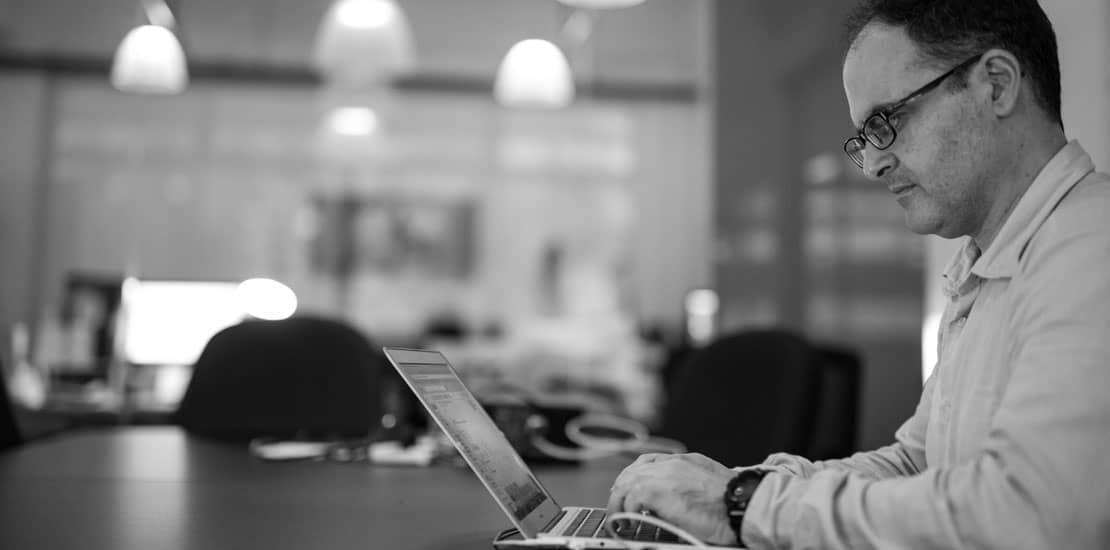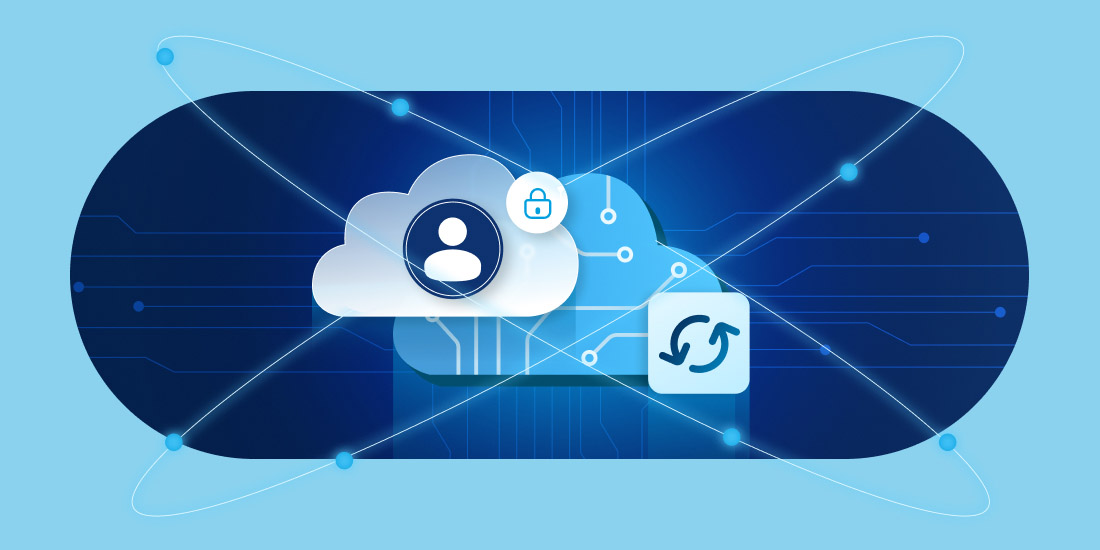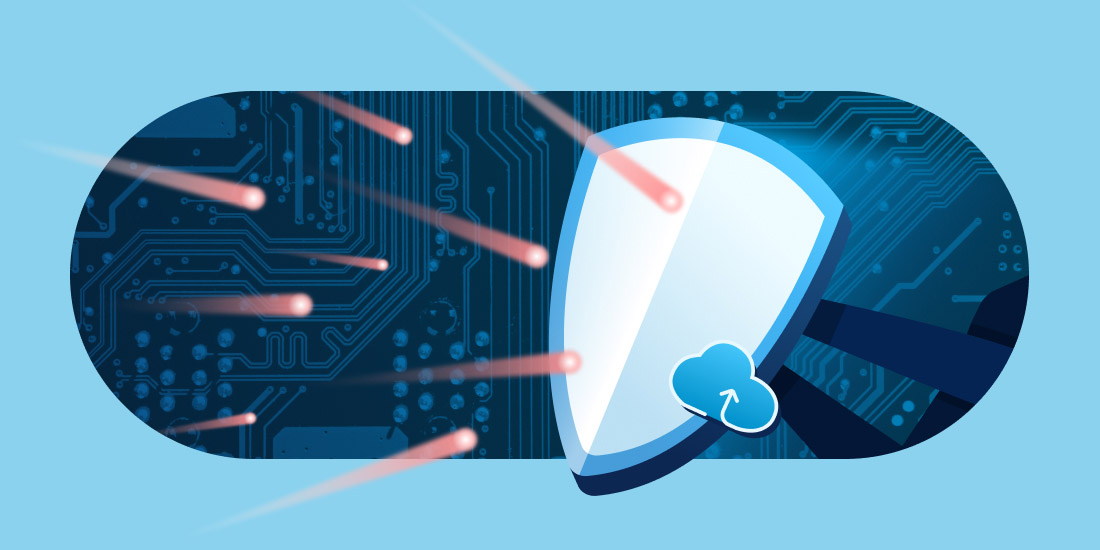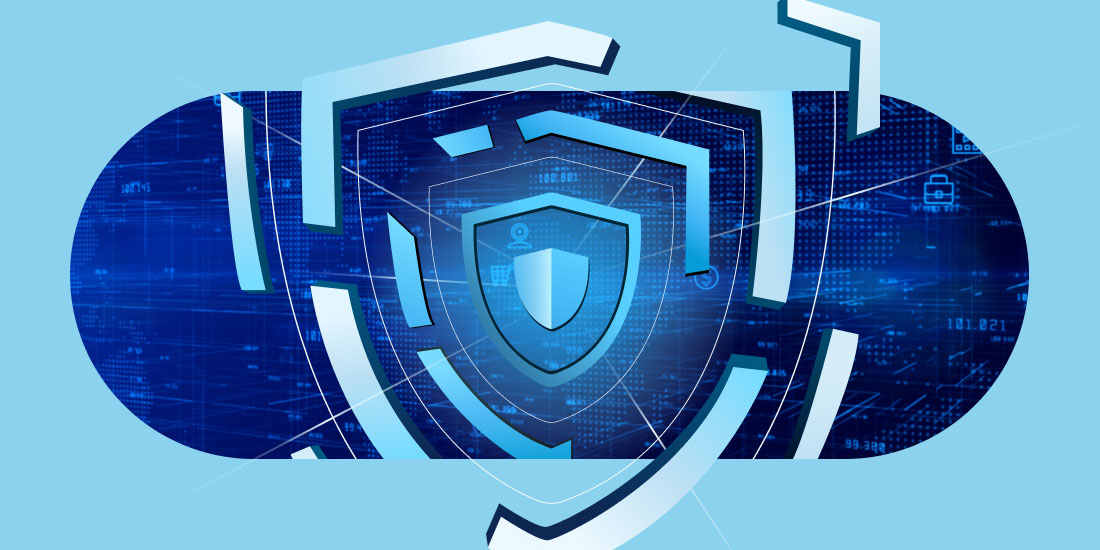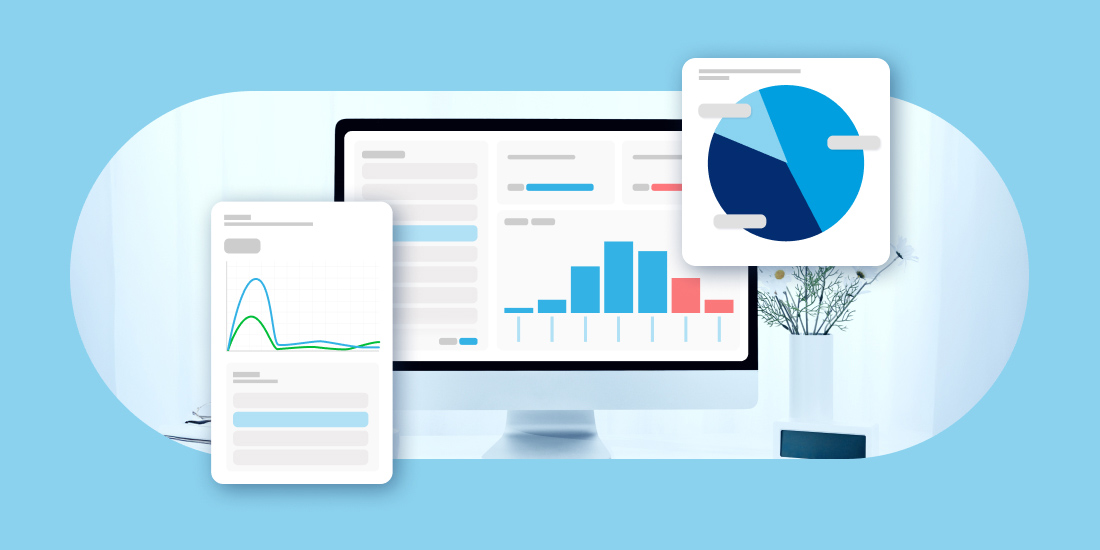With triple-digit annual growth and 80% margins, Dropsuite offers more than data security
When an SME was hacked the owner saw a gap in the market for data security, then a friend from Google helped him scale the business.
That friend is Charif Elansari and he’s now the CEO of Dropsuite who provide over 140,000 SME’s with the ability to back up their websites with the click of a button. And all it costs them is the price of a coffee every month.
Charif visited The Constant Investor headquarters to tell Alan about Dropsuite’s amazingly scaled operation.
Full Transcript
Alan Kohler: Tell us about how Dropsuite began.
Charif Elansari: Dropsuite is a company that allows small and medium businesses to back up, protect and recover their data in case of any issues that threatens their business. The company was built from a true pain point, where the founder had a different business, his name is John Fearon, he had a database of customer information that was hacked.
AK: This was a separate business?
CE: Yes, this was a separate business, and he got hacked and he wasn’t able to recover his data. As a typical entrepreneur, he started thinking, well if I had this problem then there must be hundreds of thousands or millions of small businesses that have the same problem.
AK: When was this?
CE: That was at the end of 2011.
AK: And where was it?
CE: This was in Singapore. And then instead of restarting the business that he was in, he decided to create an affordable, easy to use backup solution for small to medium businesses, leveraging the cloud. Remember, the cloud was just beginning to start to show the growth that we have experienced in the past 10 years
AK: Did he go with Amazon Web Services then?
CE: Yes, he did and we are still a big user and big fans of Amazon Web Services. This really enables small customers like us to become global almost overnight. So I was the first Angel Investor for John.
AK: How much did you give him?
CE: I put in about fifty thousand Singapore dollars, about $45,000.
AK: And what were you doing at the time?
CE: I was working at Google. I was heading sales and operations. I was one of the founding members of the Singapore team for Google. We started with 15 people and by the time I left it was 250. Today it is 1000, just to put things in perspective.
AK: Ending up with a new managing director of the ABC Michelle Guthrie.
CE: Yes, who was my boss in the last few months before I left Google to still be in the tech space but to do something smaller where I can be in full control and take it from one level to the other.
AK: So what brought about you taking control of or running Dropsuite. How did that come about?
CE: It is really interesting. We had friendship and trust built with the founder and we were keeping in touch every 3-6 months to get an update on where he was and about a year and a half into this project, or this start-up, he came back to me and said “Charif, I am really good at starting stuff, but I need someone who has got the business hat on to take it to the next level”. For me it was like the butterfly going in to the flames. It was something that I have been itching to do, I have worked in big companies for most of my life, I was working at Dell and I was working at Google in the 11 years before I jumped into the start-up bandwagon. I said “I’ll do it”. So I quit my high paying job and I took over the start-up. At that time, absolutely, the idea made 100% sense, it resonated, it was solving a true pain point for the small and medium business.
AK: So at that point, what had John created?
CE: What he created was a website and database backup product that is fully automated, so you sign up to it, you say “I want to back up” and everything happens in a very automated way, and it takes your data on a daily basis and takes it to the cloud, and enables you to restore data from any point of time. It is a bit like a time machine. Where you click on a certain day and restore your data, in case you got hacked, you have a problem with an employee etc.
AK: And it takes a margin over what it pays AWS.
CE: Yes, I mean we put, of course, our mark up on top of the cost. The cost from AWS as you scale the business becomes very very small. Our gross margins are super healthy, nearing 80%. We have built a true software business that scales and the more you scale the more benefits you get when it comes to gross margins and profitability. So going back to the story, he built a great what we call in the start-up world a minimum viable product.
AK: That was one product?
CE: It was one product initially and by the time I took over, we had 200 paying users, that is it.
AK: And how much were they paying?
CE: They were paying single digit dollars per month. It was almost a negligible business. So when I took it over, what he was doing was trying to go directly to small and medium businesses using Google AdWords, search engine marketing and doing marketing campaigns directly to the small businesses and say “will you buy my product”. Well that doesn’t scale because the return on investment on marketing is not there. And then number 2, you have to support all these users, most of them are not IT savvy. So you had to build a marketing team, you had to build a support team and then what about your engineering and software development, which is really the heart of the company. So when I took it over, I was like “great idea, we should absolutely change our business model”, to what I dubbed the B to B to B business model. So we sell and offer our products to sellers and to distributors like hosting companies. GoDaddy is a partner. Crazy Domains is a partner, just launched last week. Then we let them sell the product to their end users. The benefits are many fold. One is the incremental cost to acquire a customer is zero, because the selling and marketing is happening through the partner.
AK: But you have to acquire the partners
CE: We had to acquire the partners, but it is much easier because you are talking about acquiring 40 partners, or 30 partners or 50 partners, and then in return what we have today is more than 140,000 paying users. So we are able to grow from 200 paying users to north of 140,000 paying users by deploying this model.
AK: How does your relationship with the partners work. What do they pay? Do they pay you or do they act as a transfer of the cost to the paying customer.
CE: We let them own the relationship. So what we do is we agree on the distribution or reseller pricing, which is wholesale pricing, and then they price it any way they want to, in a way that makes sense to them and to their end users.
AK: So when you say your margin is 80%, that is from you to the partner?
CE: Yes, exactly. So the gross margins are 80%, which is the revenue minus the cost of goods sold, which is mostly Amazon Web Services. So that is the net revenue.
AK: Then the partner puts a margin on top of that.
CE: Exactly. And it is still a super affordable product that makes buying the service almost a no-brainer for these small and medium businesses.
AK: So what does it cost?
CE: So for example for a website and database backup you are talking about three Aussie dollars a month. That is it. And I just paid $3 for a latte right now.
AK: And within the $3 per month there’s 2 sets of margins.
CE: Correct. And for us, no marketing cost. No support cost. All the billing happens by the partner, so all we do is we invoice 40 partners every month for the 140,000 paying users. This model scales like magic.
AK: So what is your average revenue per user?
CE: The average revenue per user is about $1.15 per month per user.
AK: And how many have you got?
CE: North of 140,000 paying users and growing at a very fast rate.
AK: I am trying to do some mental arithmetic here. So what does that mean in revenue?
CE: From an annualised run rate, if you take 140,000 times 1.15 it will take us to about $2,000,000 at this moment. Last year we ended the year with 127,000. The year before we were at 42,000. So the growth has been triple digits since day 1, since 2014 onwards.
AK: So at this run rate, what do you expect to end 2017 with?
CE: We are not giving forward looking forecasts at this moment.
AK: So what is your monthly growth right now?
CE: So right now if you look at the end of the year, we are nearing 150,000 in the last 3 months, so you can do the math on the growth of the company.
AK: Right, and so this is global.
CE: We are a very global company. I remember one time when we were building the investor presentation, I asked my CTO “would you please give me an end user view of where we have customers” We had customers in 120 countries. This was a company of 12 employees based in Singapore, with 3 employees outside of Singapore, 2 in the US and one in India.
AK: So which is your biggest partner? Is it GoDaddy?
CE: The top partners that we have are GMO internet in Japan, the biggest hosting company in Japan. Obviously GoDaddy is a big partner. We have also the biggest hosting company in Canada, the biggest hosting company in Ireland, and we are soon launching Ingram Micro, which is a huge IT distributor of $50 billion of sales per annum.
AK: How do these partners go about marketing your product to their clients?
CE: There are 2 ways of doing it, with our existing channel, which is the hosting channel, it is all done online, so when you go for example to GoDaddy or to Black Knight in Ireland or one of these companies, you want to buy a hosting plan, you want to buy a website, and you want to be able to host it with these hosting companies. The minute that you do that, you are asked if you also want to back up your website and databases for peace of mind, in the cloud. That will be our solution. You check the box and then you procure the service. Everything happens automatically from that moment on.
AK: So buying your product is just a checkbox?
CE: It is literally one check box, and more importantly there is this moment of truth that comes sometime in the future where you need to restore data. Something happens and you need to restore data. We allow that to happen also with one or 2 clicks. Single sign on to our partner’s dashboards. Nobody has to come to our specific website to do anything. 2 clicks and you are back in business.
AK: That is for new customers of each partner, what happens when partners have an existing client. How does that work.
CE: That is the next 1-million-dollar question for us in terms of activities. The growth that we have seen so far are predominantly from new users coming in to our partner’s ecosystem. The next phase for us is to start marketing our products to their existing users.
AK: Yes, so how are you going to do that?
CE: There is a lot of things that we can do. We are working right now on doing customer segmentation to really understand which customers would benefit most from this. It is a process of a typical B to C marketing campaign. That will be done by the partner, not by ourselves. You segment your customers. The typical ABC’s of marketing. You segment the users, you market to them and you make it extremely easy. Again, you want to back up? Yes, one click and you are done. The reason why we can do that, it is not magic or anything, it is more like we spend many weeks, many days or sometimes many months working with the partner prior to the launch to have our product literally be living inside their infrastructure. So the systems know each other very well and trust each other from a security standpoint, hence we have this one click provisioning that happens and the one click restore as well. And that is what we stand for as a company.
AK: Now, I notice on your website that you have a number of products now, but are they all fundamentally one product with different skins?
CE: They are different products, but all cater to small and medium businesses.
AK: So run through what they are.
CE: Yes, so our main product that we launched first is the website database backup product, which allows you to back up your website files and databases and restore them from any point of time. We recently launched email archiving and backup that enables you to archive your emails for employees and manage them from a central dashboard. Again, it is in the same simple, easy to use, affordable experience. We have recently also launched file based server backup that again allows small and medium businesses to backup all their server files, which is where a lot of critical information is lying. What we are doing is we are going up the value chain in terms of value propositions for small and medium businesses, always through partners, and then we talked about ARPU being 1.15 dollars per month. As we start selling more of these new products, if we succeed in that, our ARPUs will keep going upwards and that is the strategy for us.
AK: So how many of your 140,000 end users are on the other products apart from the original one?
CE: Right now because these products are really new for us, the vast majority of our users are on our flagship website and database product. So we have a huge runway to go in terms of adding these new products and selling them successfully through our existing partners and of course to add new partners as well.
AK: I suppose that you are delighted when you see big hacking events take place in the world!
CE: I don’t get delighted but I wish I had the platform to give some advice to small and medium businesses because there are some really basic things that have to be done. Right, for example passwords. You cannot imagine how many people have Admin123 or Password01. There has to be some kind of education to all companies, but especially small and medium businesses who are most vulnerable. The statistics always point towards the vast majority of threat attacks happening to the most vulnerable segment, which is small businesses. So password management. Don’t download stuff from emails that you don’t know where it is coming from. Have anti-virus. Have backup in a separate location, not in your office. These are 3 or 4 very basic things that you can do and then you can protect yourself from 99.9% of the vulnerabilities. Ransomware – bad guys come and take your data as ransom. And then they tell you… and thanks to Bitcoin, they tell you give me $50,000 or $20,000 and pay me through Bitcoin. If you have a backup, you say “I have the data, I have a backup”.
AK: How much ransomware is going on?
CE: Oh my god, according to Kaspersky labs, which is a big cybersecurity company, 40% of small and medium businesses have experienced ransomware in the past couple of years. So the numbers are really staggering.
AK: And how much are the ransoms?
CE: Anywhere between $1000 upwards. I heard about an interesting one where a small hotel had ransomware and then they locked all the rooms. And they asked for $1500 in bitcoins to let the…
AK: The hackers were able to lock the rooms?
CE: Yes, because it is an electronic locking system. So they asked for 1,500 euros paid via bitcoin to let the guests come back to the rooms.
AK: And did they pay?
CE: Of course. You have no choice.
AK: Can you back up that?
CE: In that case, this story has more on the entertainment side, it is a true but very entertaining story, but there are hundreds of thousands of stories where customer information is taken as a ransom. Credit card information, etcetera. And that is where it becomes really painful and it is no longer 1,500 euros.
AK: So where are most of the ransoms coming from? The ransomware hacks coming from?
CE: It happens from all over the world, from Russia, US, China, everywhere
AK: Russia and China mainly, or Africa?
CE: It is everywhere. Just imagine people doing this full time. It is a way for them to make a livelihood. They do it every day.
AK: So that has given you encouragement that your business is going to keep growing.
CE: Absolutely, I mean we have really hit our product market fit. We are serving a truly underserved market segment, the small and medium business. We are giving them an easy, affordable solution and we are doing it through service providers so they don’t have to call another number for support, another credit card bill to pay. Everything is integrated with their existing service provider
AK: So tell us about your cost base. Is it mostly fixed, and does the fixed cost base stay the same as you grow?
CE: Exactly, so as I mentioned to you, our gross margins are near 80%, so very healthy gross margins. And our operating expenditures don’t have to scale much as we grow.
AK: How many people have you got?
CE: Just to put things in perspective, when I took over the company at the end of 13 we were 12 people with 200 paid users. Today we are 24 employees with 140,000 paid users. Zero support staff. Zero. We don’t have to support our software because everything has been tested and tried with our partner prior to the launch.
AK: And do you have other variable costs apart from Amazon Web Services?
CE: That is it.
AK: That’s it.
CE: And no capex. No capital expenditure.
AK: You are presumably continuing to develop the products.
CE: That is right but I mean for example we don’t have assets, we don’t have to build or buy a lot of hardware and commit to rent data centres for x number of years. We don’t have any of this. So we have opex, everything is expensed as the wages when it comes to software development.
AK: So where do you expect to be in 5 years’ time?
CE: Really we are just at the very beginning of the journey. The total addressable market is just huge; you are talking about 200 million small businesses. In Australia alone we have 2 million small businesses online and hundreds of millions of websites and emails. I believe that we are just scratching the surface.
AK: So what is your competition?
CE: It is really interesting, most of the competition has been an on premise traditional backup provider, who doesn’t have the cost structure to go after small businesses. So today we have very limited competition.
AK: There must be other cloud based security companies?
CE: Exactly, so everybody now is moving to the cloud and of course we have to keep our eyes open. The best example I can give is Microsoft. It took them a while to adjust to the new world, but when they adjust they moved really fast. In our case we believe that we have this rare land grab opportunity before the competition catches up.
AK: And then they will have to buy you.
CE: And then they have to buy me maybe, or I have to buy them maybe as well (laughs).
AK: Well it has been great talking to you Charif, thank you very much.
CE: Thank you. Really enjoyed it.
Reprinted by permission. Source: The Constant Investor
